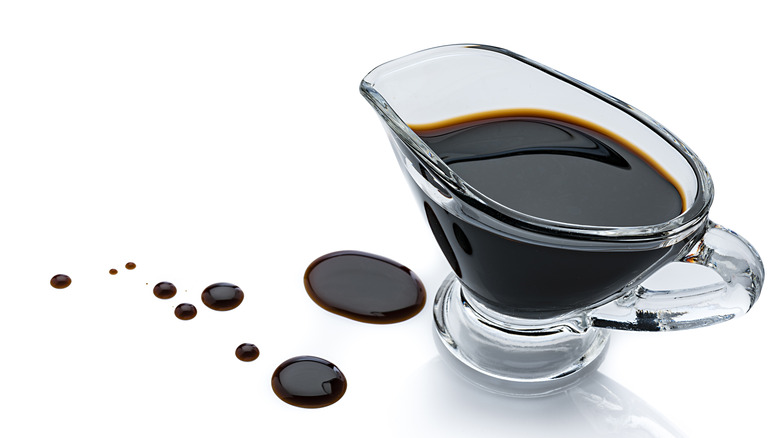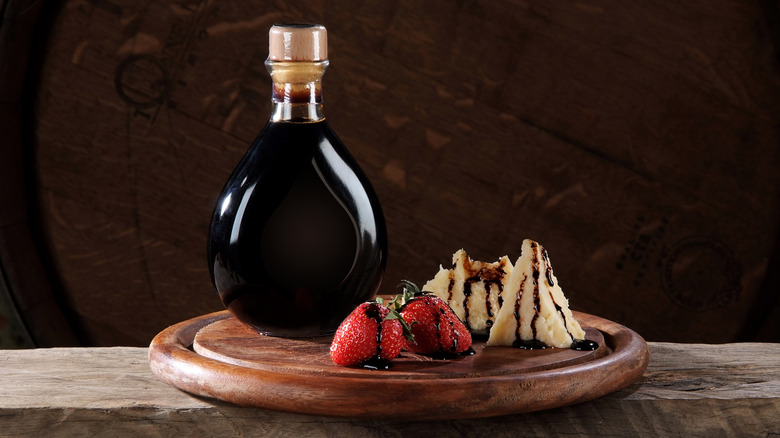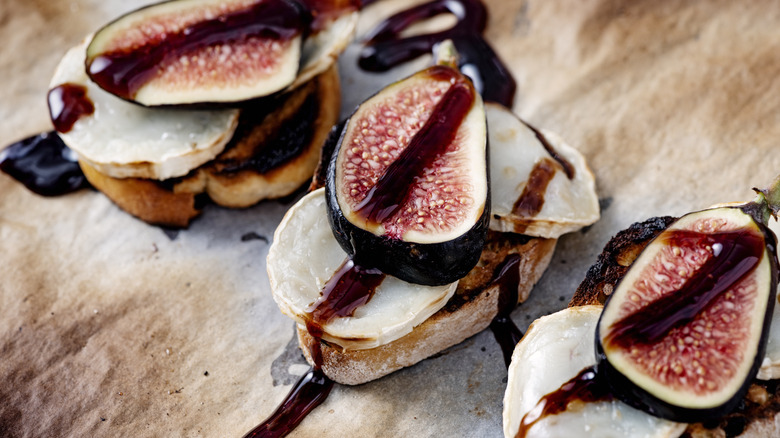What Is Saba And How Do You Use It?
Referred to as "the poor man's balsamic," saba is an ingredient we all should stock in the pantry to add a slightly acidic, sweet condiment to many dishes. The Italian syrup, also referred to as sapa, vin cotto, or mosto cotto, looks and tastes similar to its pricy cousin, balsamic, but is much more affordable.
Ancient Greeks and Italians who couldn't afford sugarcane sweeteners centuries ago made saba by slowly cooking and preserving the grape must of the Trebbiano or Lambrusco grape varieties. The tradition is still practiced today, using the grapes pruned from the vines before harvest to avoid waste. The unfermented grape must is reduced to a third of its original volume, concentrating its sweetness and developing flavors reminiscent of raisins and plums, with a deep port wine hue. However, in southern Italy, figs are sometimes used to create saba. Even though sugar is more readily available and affordable in the modern era, farmers continue to produce this syrup. As Lynne Rossetto Kasper, author of "The Italian Country Table," aptly explains (per The New York Times), "Sugar sweetens. Vin cotto flavors."
Saba's fruitiness and slightly sour taste make it a good substitute for balsamic vinegar in any recipe. It can be added to marinades, salad dressings, and sauces, or used sparingly as a condiment to finish charcuterie boards, desserts, and fresh berries.
How to use saba
Originally used to sweeten drinks and desserts, modern chefs are now using saba for so much more. As an acid, saba brightens and cuts through fatty, slow-cooked braised meat dishes and adds a touch of sweetness. It can also be added to barbecue sauce and slathered on wings, ribs, and meatballs.
Mixologists use the syrup to flavor cocktails and sodas as a means to both eliminate the refined sugar found in soft drinks like Coca-Cola and introduce a similarly complex flavor. Combine equal parts bourbon and saba in a rocks glass with ice, top it off with club soda, and garnish with an orange peel for a sophisticated take on Bourbon and Soda.
Salty and sweet is a delicious flavor combination for snacks and appetizers. As a condiment, saba can be drizzled on Pecorino Romano or Parmigiano, adding a sweet element to pungent, aged, salty cheeses. Crostini spread with whipped ricotta or burrata, topped with a fresh fig, and drizzled with saba is a quick and easy appetizer. And for a salad, dress hearty greens (like endive and radicchio), goat cheese, and walnuts with a vinaigrette made with saba and olive oil.
In desserts, the slightly acidic syrup balances sweet dishes, offering a pleasing contrasting sharp bite. As a topping, try drizzling saba on scoops of vanilla ice cream or fresh strawberries to add another dimension of flavor. Or bake pears, apples, or peaches with saba, then top the dessert with fresh whipped cream and more saba before serving.
The difference between saba and balsamic
Saba is thought to be the precursor to balsamic vinegar. Stored in vinegar barrels, saba becomes balsamic as the syrup mellows and slowly matures. Families have passed down prized barrels of balsamic through generations, whereas saba is enjoyed immediately.
Both kinds of vinegar are traditionally imported from Italy's Emilia-Romagna provinces. Genuine "Aceto Balsamico Tradizionale" is mandated by strict laws, which include a minimum of 12 years of aging, and its production must occur within the provinces of Modena or Reggio. However, the market is flooded with imitation, cheap versions of balsamic, aged between 1 and 10 years.
Selling for $10 to $25 versus $100 a bottle for aged genuine balsamic, saba is a budget-friendly substitute with a long shelf life. A good bottle of saba is better than a cheap aged balsamic, especially when finishing an uncooked dish, like a Caprese salad, where the quality will stand out. Saba's complex flavor is concentrated, so a few drops go a long way.



